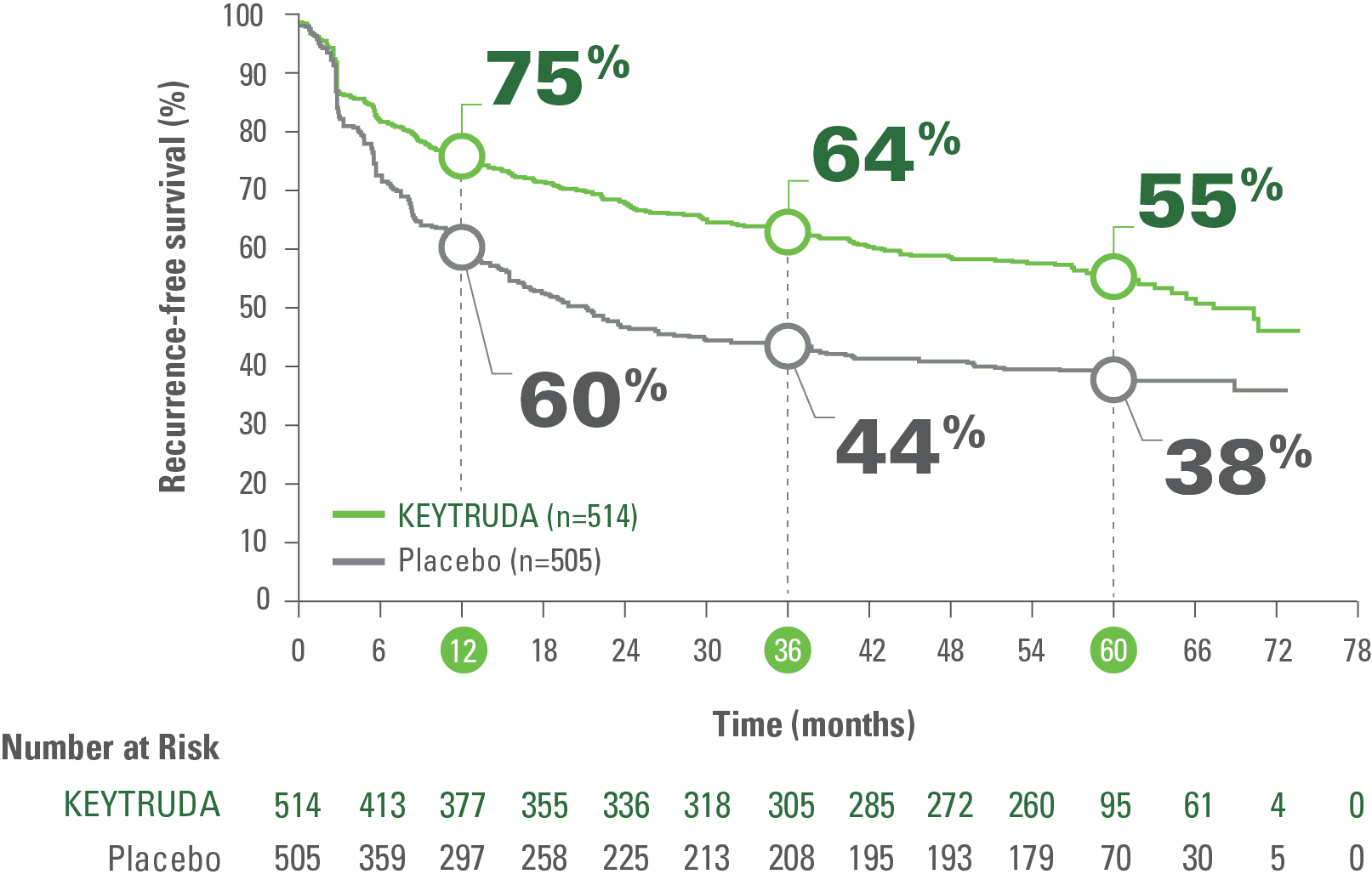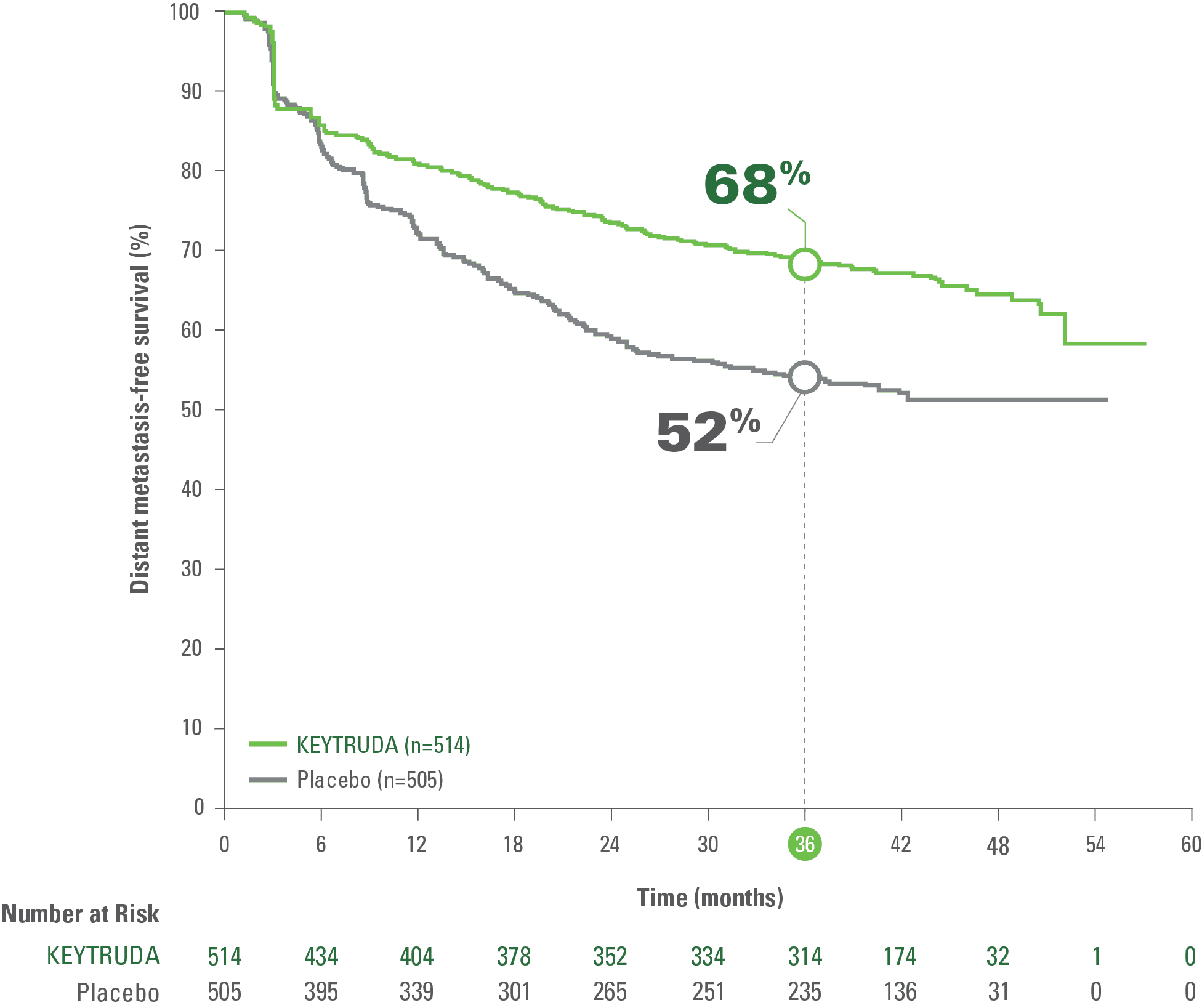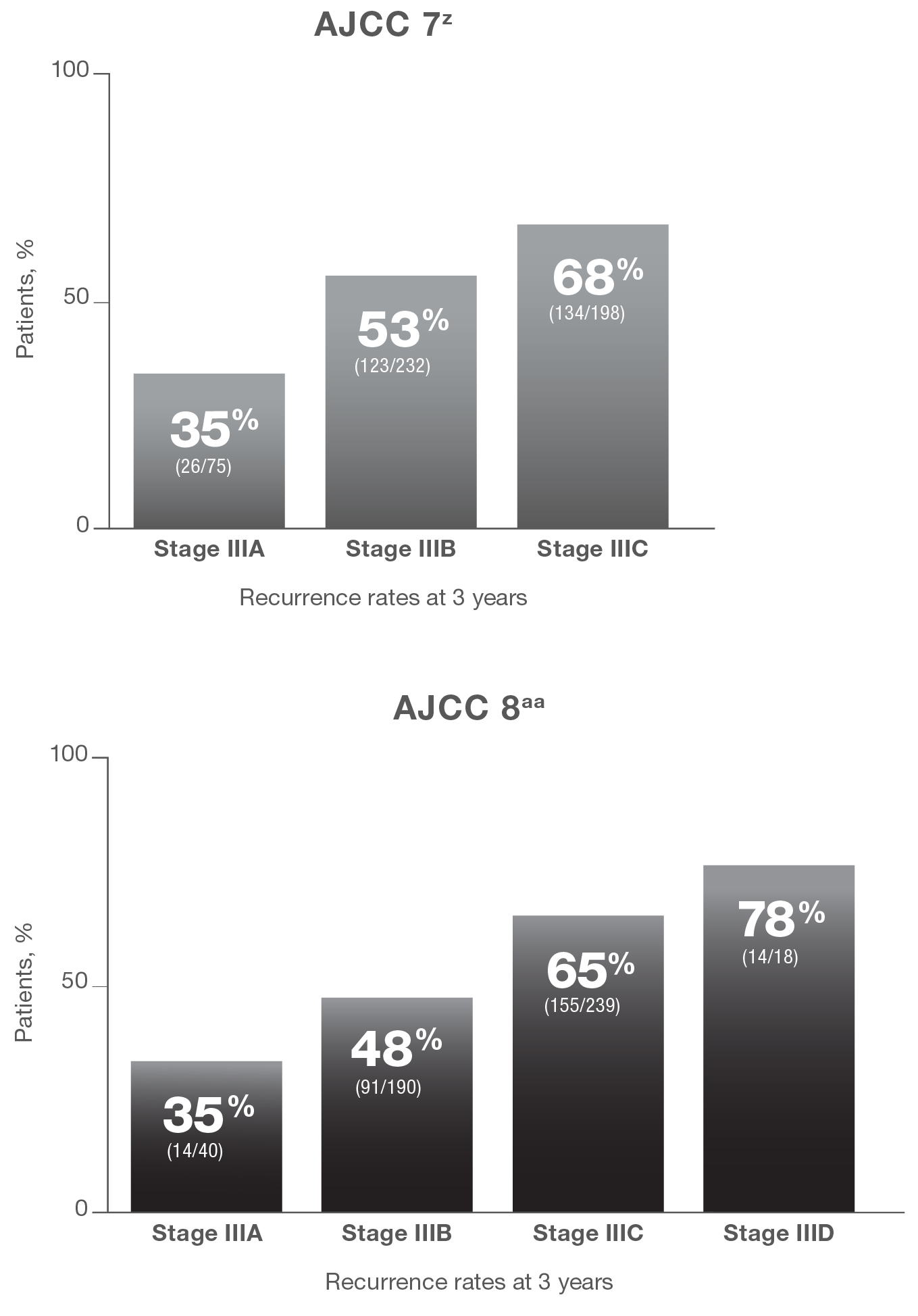KEYTRUDA and KEYTRUDA QLEX are each indicated, in combination with pemetrexed and platinum chemotherapy, for the first-line treatment of adult patients with metastatic nonsquamous non–small cell lung cancer (NSCLC), with no epidermal growth factor receptor (EGFR) or anaplastic lymphoma kinase (ALK) genomic tumor aberrations.
KEYTRUDA and KEYTRUDA QLEX are each indicated, in combination with carboplatin and either paclitaxel or paclitaxel protein-bound, for the first-line treatment of adult patients with metastatic squamous non–small cell lung cancer (NSCLC).
KEYTRUDA and KEYTRUDA QLEX, as single agents, are each indicated for the first-line treatment of adult patients with non–small cell lung cancer (NSCLC) expressing programmed death ligand 1 (PD-L1) [tumor proportion score (TPS) ≥1%] as determined by an FDA-approved test, with no epidermal growth factor receptor (EGFR) or anaplastic lymphoma kinase (ALK) genomic tumor aberrations, and is:
- stage III where patients are not candidates for surgical resection or definitive chemoradiation, or
- metastatic.
KEYTRUDA and KEYTRUDA QLEX, as single agents, are each indicated for the treatment of adult patients with metastatic non–small cell lung cancer (NSCLC) whose tumors express programmed death ligand 1 (PD-L1) [tumor proportion score (TPS) ≥1%] as determined by an FDA-approved test, with disease progression on or after platinum-containing chemotherapy. Patients with epidermal growth factor receptor (EGFR) or anaplastic lymphoma kinase (ALK) genomic tumor aberrations should have disease progression on FDA-approved therapy for these aberrations prior to receiving KEYTRUDA or KEYTRUDA QLEX.
KEYTRUDA and KEYTRUDA QLEX are each indicated for the treatment of adult patients with resectable (tumors ≥4 cm or node positive) non–small cell lung cancer (NSCLC) in combination with platinum-containing chemotherapy as neoadjuvant treatment, and then continued as a single agent as adjuvant treatment after surgery.
KEYTRUDA and KEYTRUDA QLEX, as single agents, are each indicated as adjuvant treatment following resection and platinum-based chemotherapy for adult patients with stage IB (T2a ≥4 cm), II, or IIIA non–small cell lung cancer (NSCLC).







